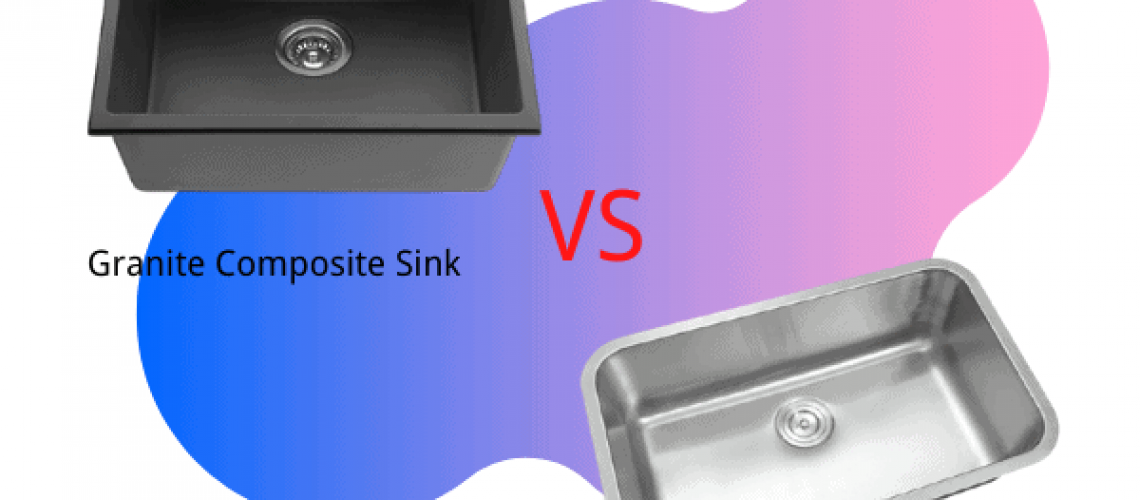It’s always challenging to make a perfect kitchen sink choice. This confusion is due to the wide variety of kitchen sinks available in today’s markets. However, we would shed some light on some sinks to help you make an informed purchase.
This article would border on the differences and similarities in features of two of the most used sinks. Tag along as we delve into the Granite Composite Kitchen Sink Vs. Stainless Steel Sink discussion.
Classification of Sinks
Based on the Installation method:
- Undermount sink
- Top mount sink
- Flush-mount sinks
Based on Materials used in Manufacturing:
- Ceramics Sink
- Fireclay Sink
- Porcelain Sinks
- Cast iron Sink
- Stainless Steel Sinks
- Copper Sink
- Granite Composite Sinks
- Acrylic Sink
- Natural Granite Sink
- Solid Surface Sinks
- Marble Sinks
- Bamboo Sink
- Glass Sink
- Concrete Sink
Based on Bowl Configuration:
- Single bowl
- double bowl
- Triple Bowl
Based on Use/function
- Drainboard Sinks
- Low Divider Sinks
- Handmade Sinks
- Farmhouse Kitchen Sinks
- Pressed Sink
- Utility Sink
- Laundry Sink
- Integrated Sinks
- Workstation Sinks
- Corner Sink
- Bar/Prep Sink
- Island Sink
Granite Composite Kitchen Sink Vs. Stainless Steel Sink
The main difference between these two sinks is their base material. While composite granite makes up the granite composite sink, the other has stainless steel as its basic element.
Below we treat each sink as a subtopic while considering its advantages and disadvantages.
Granite Composite Sink

Composite sinks are those with a blend of a natural component and a resin. In this combination, the mineral content always tends to have a higher concentration. The natural element might be quartz, granite, or the two.
Hence, you can’t say quartz or granite sink because it wasn’t from the mineral only. The term given to the finished product in sink form would depend on the manufacturer. Also, the percentage composition of the single components plays a part in the term.
Granite composite sink is an engineered combination. Yet, it contains crushed quartz, stone dust, and acrylic resins. The result of this blend is high durability, easy to maintain, and stone-like material.
Granite composite sink is lighter than its counterpart solid granite sink. Thus, it contains 80% quartz sand and 20% acrylic, but most have over 70% quartz sand. The acrylic helps bind the engineered components of this sink. Making the granite composite sink a homogenous piece.
Click here to view the Chica granite sink series.
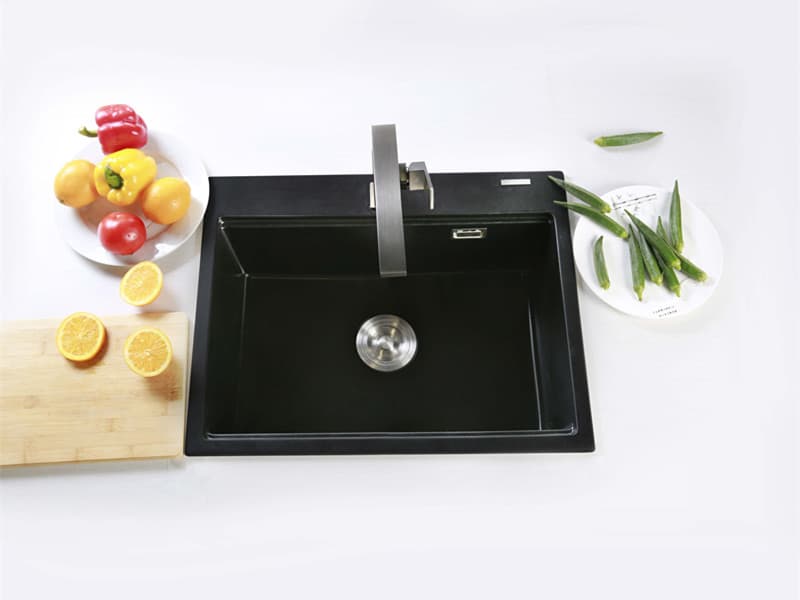
Types of Granite Composite Sink
Granite composite sink is both functional as well as aesthetic. However, being a unique piece of kitchenware, granite composite sinks come in different styles.
It is malleable and can come in the form of any of the sinks mentioned above. Are you a fan of a single bowl, double bowl, or under-mount sink? You can craft your granite composite sink into any sink shape that suits your taste.
Advantages of Granite Composite Sink
Granite composite sink offers a lot to the kitchen space. Besides, it is beautiful and blends well with kitchen space and countertop. The benefits composite sink provides, include;
Resistant to Chip and Scratch. The presence of chips and scratches on the sink makes the kitchen area look untidy. More so, granite composite sinks are chip and scratch-resistant. Hence, this feature helps to ensure that your sink maintains its beauty throughout its lifetime.
Stain Resistant: The ability to resist stain differentiates natural granite from Composite granite. Natural granite is porous.
This porosity provides space for the stain to hide, and composite granite is non-porous. Moreover, the compactness of the Granite composite sink makes it stain resistant.
Heat Resistant: The kitchen is that part of the house where cooking takes place. Also, cooking involves heat. So, heat resistance should be a major rule when choosing a sink for the kitchen.
Granite composite sinks withstand temperatures above 500 degrees Fahrenheit or 260 degrees Celsius. Hence, hot pots and plates would not leave any marks or cause discoloration of this beautiful piece.
Durable: The durability of the Granite composite sink is off the charts. Thus, the components of the sink, granite, and resins are durable. Also, the sink resists change from external factors, making it an epitome of durability.
Malleable: The malleability of this piece of kitchenware makes it easy to change the shape. It also makes the addition of other sink accessories easy. You can have holes pre-drilled for the addition of faucets and soap dispensers.
Multi-color Options: There are different colors for you to choose from. Granite composite sink comes in multi-colors; white, black, coffee, grey, beige. Etc. But, the color you choose should be dependent on your kitchen background and countertop.
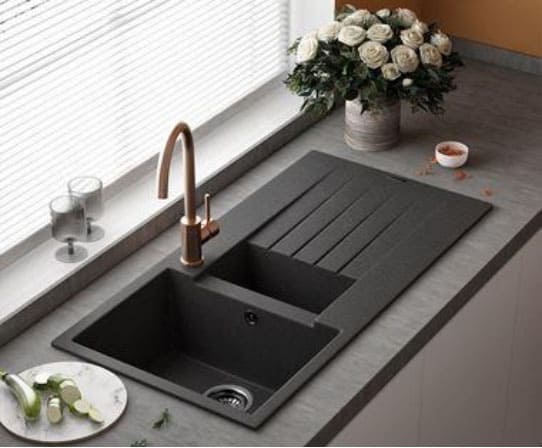
Disadvantages of Granite Composite Sink
While this sink is everything one would want in the kitchen, it has some challenges. Those challenges include;
Bulky and Heavy. Granite composite sink is lighter than the natural granite sink. But it is still heavier than conventional kitchen sinks. Before installing this sink, it’s necessary to reinforce the area around your drop-in sink.
Less Diversity: One reason why most people tend to shy away from composite sinks is lack of diversity. But stainless-steel sinks may come in different shapes or sizes. Yet Chica Dragon can provide you with customized designs and multiple attractive colors of the composite sink.
Expensive: Granite composite sinks are more expensive than solid surface sinks. The cost of this piece is due to the series of complex processes put into its production. The parts of this sink are also expensive, from the granite to the resins used for binding them.
How to Take Care of Granite Composite Sink
Proper maintenance is essential to make the most use of a granite composite sink. The good news is that this sink is easy to maintain. Below are some ways you can keep your granite composite sink.
· Rinse the sink after every use. The rinsing helps to wash away standing liquids and food particles left on the sink.
· Do not use heavy detergents, abrasive substances, or metal scrub pads so as not to damage the surface
· Stain removal for Granite composite sinks is dependent on the staining agent.
Oil-based stains: This includes paint stains. Clean the stain immediately using a cloth dampened with denatured alcohol.
Lime buildup: Cover the base of the granite composite sink with a solution of vinegar and water. Leave the solution on the sink overnight; this would weaken the stain. Rub the base of the sink well with a stiff sponge and rinse with warm water.
You can remove most stains on granite composite sink using a diluted organic cleaner.
Stainless Steel Sink
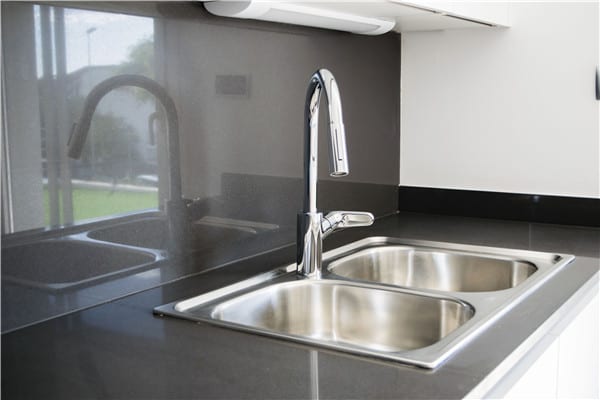
Stainless steel has been the first-choice sink in most homes for a very long time. It is the most popular form of the kitchen sink.
There is a good reason (several good reasons) why this trend has been on for quite some time now. Let us explain some terms you need to know before going out to get a stainless steel sink.
FILL IN THIS FORM TO REQUEST A QUICK QUOTE FROM CHICA DRAGON
Stainless Steel Sink Grade
Unlike steel gauge, with steel grade, the higher the grade number, the higher the steel quality. The level of steel shows the percentage of chromium and nickel present in the steel. The 304 stainless steel is the highest grade of this sink material. 18/8 stainless steel contains 18% chromium and 8% nickel.
Stainless Steel Sink Gauge
The term gauge as regards steel refers to how thick the steel is. The gauge for stainless steel ranges from 16 to 22. The lowest gauge has the thickest steel. This fact implies that 16-gauge steel is thicker than 22-gauge steel.
It also means that the lower the gauge, the higher the steel quality. Getting lower gauge steel has its advantages over getting higher gauge steel. One of the benefits of getting lower gauge steel is its durability.
Stainless Steel Sink Series
The stainless steel series goes in tandem with steel grade. The best series of stainless steel is the 316 series. However, the most widely used is 304-grade stainless steel.
There’s also the 201. It’s much cheaper than the 304 series. 201 is high in manganese, the surface is dark bright, so it’s easy to rust. 304 contains more chromium, the body is matte and does not rust.
Sink Radius
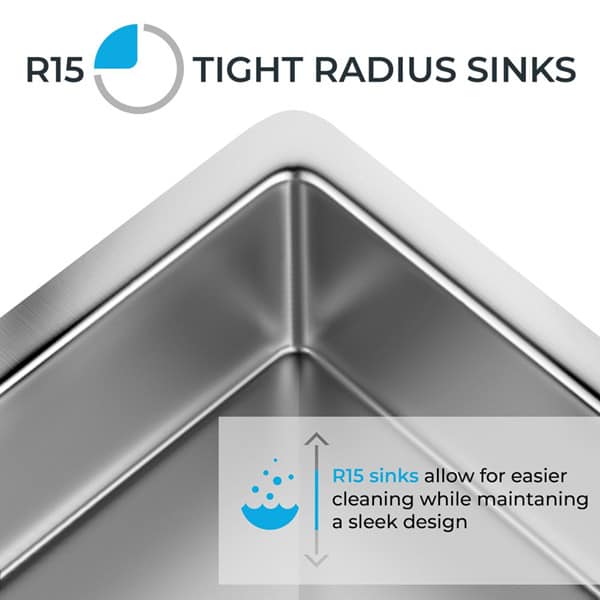
Sink radius is a term used to describe the interior angles of a sink. The higher the radius, the more curved the internal angle becomes. The more curved the tip is, the easier it is to clean the sink corners. A zero-radius sink has sharp right-angle corners. Other radius range from 15-20 degrees.
Types of Stainless Steel Sink
There are many types of stainless steel sinks. The production technique determines the category into which a sink will fall. The two include
Drawn: Here, heated steel is in a mold and shaped to form a sink. It is the most used sink in American homes. Due to its production technique, it has a high diversity and can take on different shapes. The most interesting part is that it can come with custom specifications.
Handmade: Sinks made through this process are of better quality. The quality is due to the uniformity of thickness throughout the sink. It involves cutting a steel sheet with hands. And then folding and fusing the corners by welding them to form the sink walls. It is labor-intensive and needs a high level of skill.
Sink Finishes
The sink finish determines the sink’s appearance. It also determines how noticeable scratches and chips would be on the sink. Most stainless steel finishes include;
Mirror finish: This finish is shiny and attractive. Scratches and water spots are noticeable on the surface.
Brushed and matte finish: This finish is duller. Its dull nature helps hide scratches.
Satin finish: Has a glossy finish. It can be formed by adopting the drawing equipment and polishing the surface of the stainless panel.
Textured finish: This finish is not smooth, so it hides scratches and damage. A textured finish may be difficult to clean.
The most commonly used finish is brushed finish and satin finish, click to view Chica stainless steel sink series.
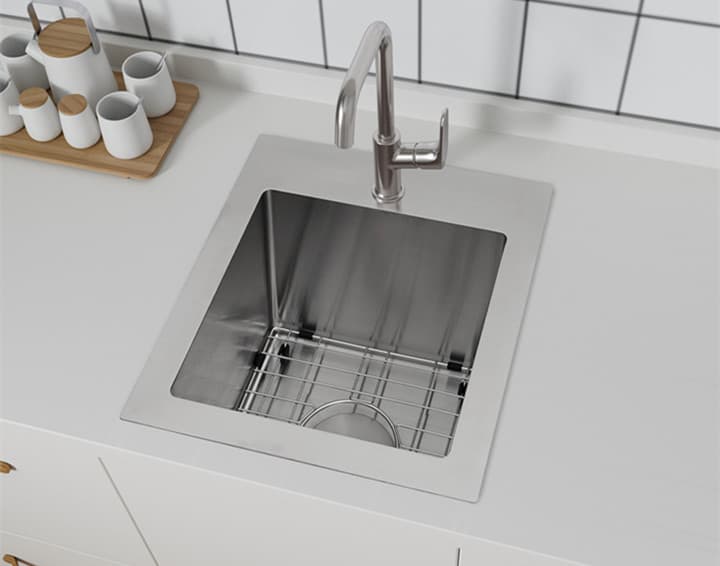
Stainless Steel Sink Pros
There is a reason why we and a host of other ardent stainless steel sink users like it. Below are a few of those reasons;
Does not Crack or chip: Steel is a resilient material. A stainless-steel sink is homogenous and non-porous. This makes it immune to cracking or chipping. It also means that it doesn’t favor organism growth.
Durable: Unlike other types of kitchen sinks, stainless steel sinks are very durable. This sink is very close to indestructible because it comes from a steel raw material. The grade, series, and gauge of steel also determine how durable the sink would be.
Recyclable: Stainless steel sinks are recyclable. Since the sinks last a very long time, owners often take old ones to steel companies for recycling.
Heat and Stain resistant: Steel has a high melting point. A stainless steel sink would not react to high temperatures, and this makes it heat resistant. Since the stainless steel sinks are smooth, it does not hold stains, making the sink easy to clean and manage.
Stainless Steel Sink Cons
While there are many benefits to installing a steel sink in the kitchen, here are a few cons you might have to deal with;
Sustains Scratches and Dents.
Steel sinks might be indestructible, but they are prone to scratches and dents. Hard contact with pots and dishes often results in the removal of the finish applied to the sinks.
Water spots Dent
When not taken care of, water spots appear on the kitchen sink. This challenge is noticeable mostly with mirror-finished stainless steel sinks.
How to Take Care of Stainless-Steel Sink

Wipe the sink after use to remove water spots and prevent food particles from sticking to the sink. The presence of water spots and food particles on the sink makes it look untidy.
· Use a sink grid to protect the base of the sink from scratch. Scratches could result from contact between kitchenware and sink.
· Avoid using bleach-based cleaners when cleaning the sink. Also, avoid abrasive materials like steel wool or wire brush. Using bleach-based cleaners may corrode the steel, making it appear rusty.
· Clean the sink using stainless steel sink cleaner to maintain sink sheen and quality.
· Do not allow wet sponges or dishes to dry on the sink’s surface, as this could undermine the beauty of the sink.
Summary
The Granite composite vs stainless steel kitchen sink debate never gets easier. Both are excellent choices but do have their pros and cons.
Moreover, Granite composite sinks add glamor to your kitchen. It fits with most countertop gadgets installed around the cooking place.
But there are little differences. From the article, you could see that granite composite betters stainless steel in durability.
Also, the price of a granite composite sink may be higher than stainless steel sink.
You are free to make your choice even though our article would help you make an informed and better buy.









